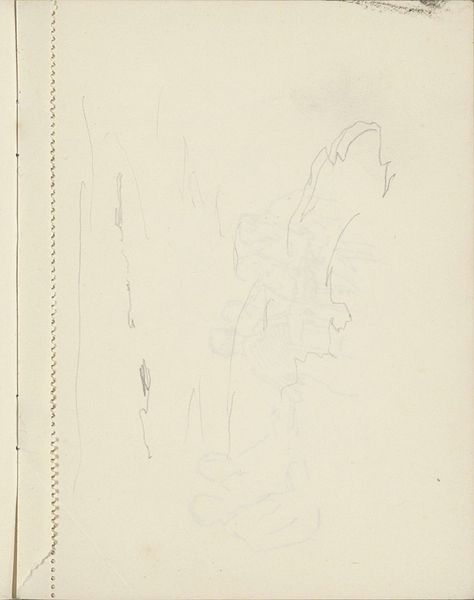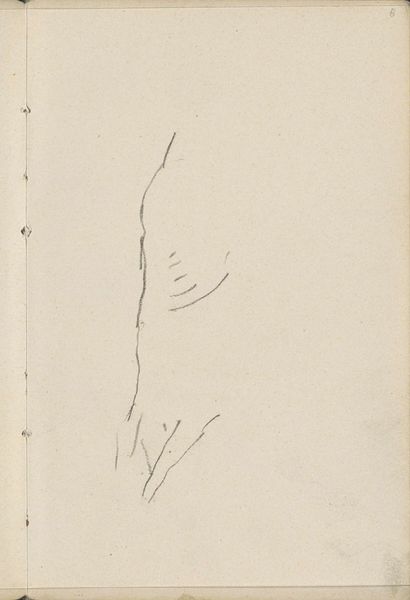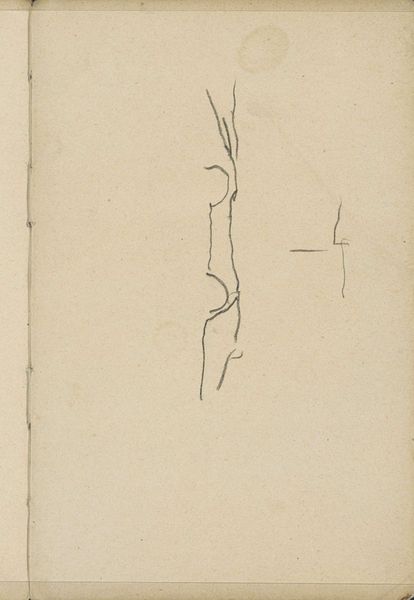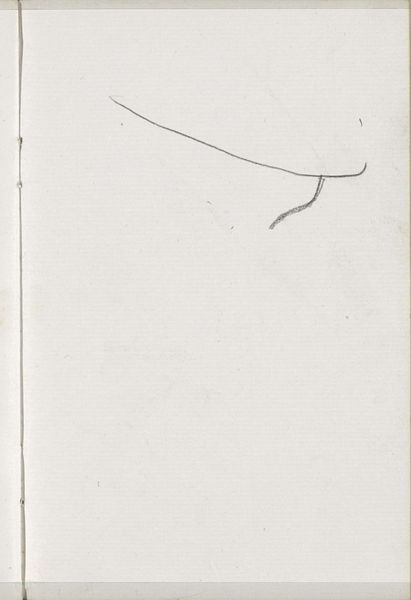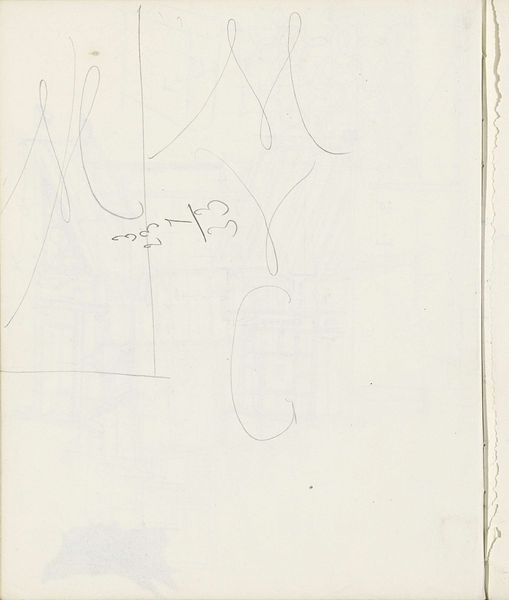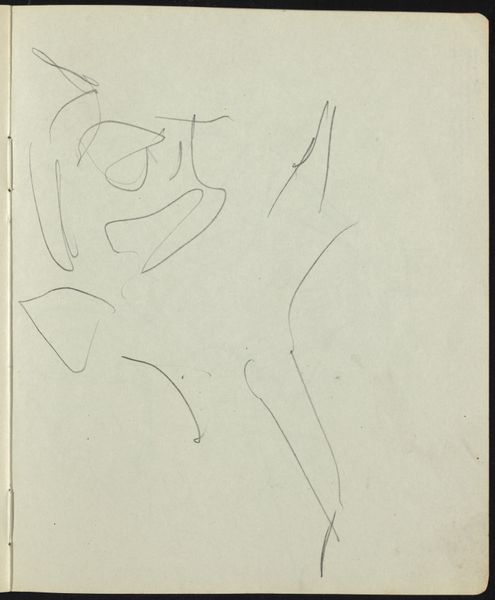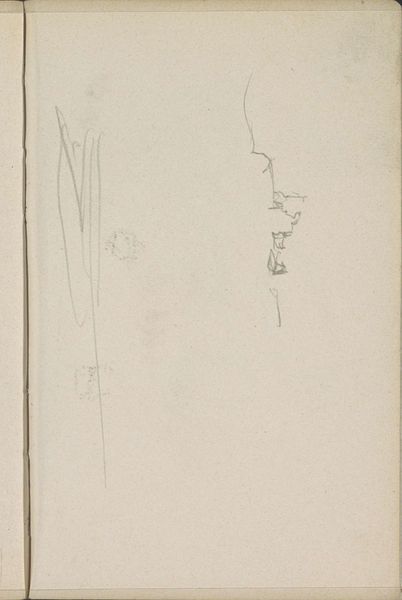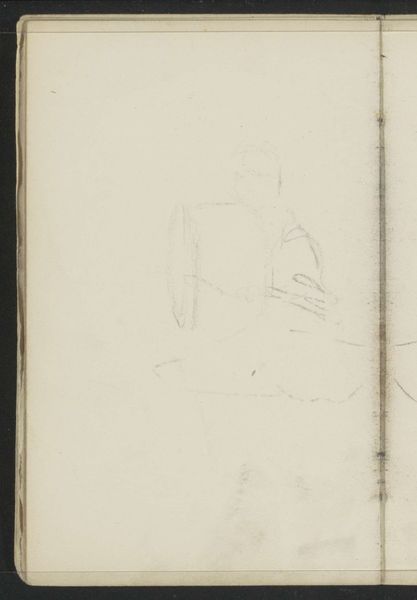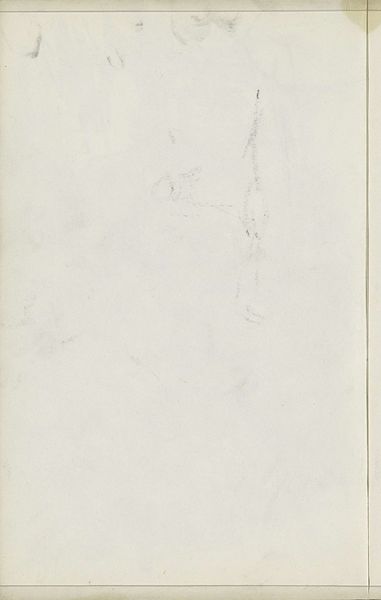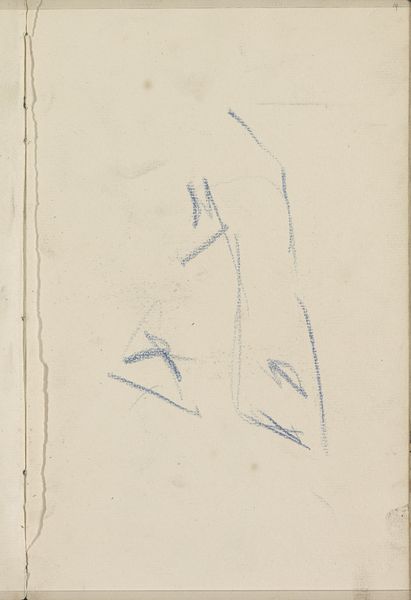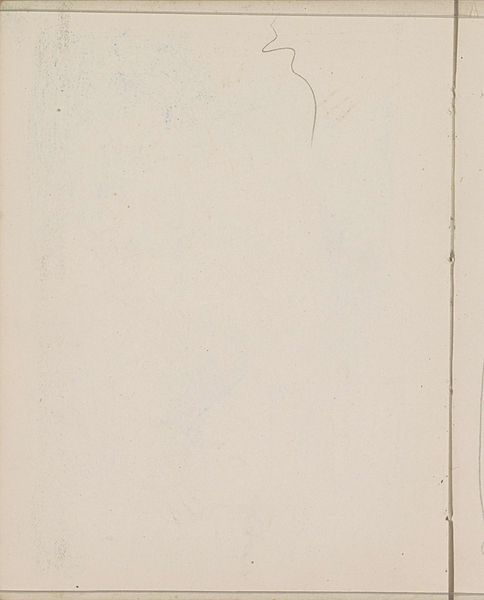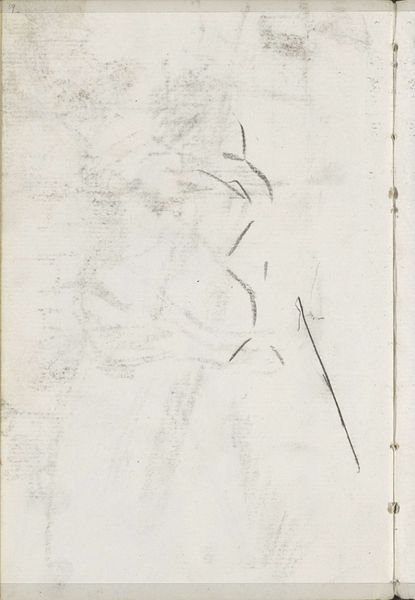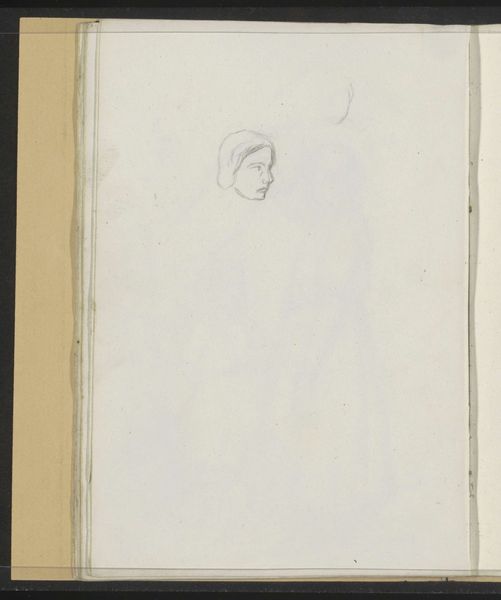
Copyright: Rijks Museum: Open Domain
Curator: Before us is "Studie," a drawing executed in pencil on paper attributed to Isaac Israels, dating from approximately 1875 to 1934, and currently held in the collection of the Rijksmuseum. Editor: There’s something so delicate about it; almost ghostly. The minimal lines against the stark page. It looks as though he was trying to catch an impression, a feeling more than an exact representation. Curator: Israels was part of a movement towards depicting modern life, so what we might be seeing is not just a formal exercise but also a reflection on the ephemeral nature of the contemporary human experience, particularly given the drawing's light touch. Consider the class dynamics at play here, who would he be likely drawing from real life? What kind of social sphere is documented? Editor: Formally speaking, I’m interested in the way the artist uses the blank space. It isolates the figure, places emphasis on the verticality of the drawn line which gives it a certain… gravity. It invites the viewer to participate, to almost complete the figure within our own minds. The softness in rendering provides visual simplicity which has great aesthetic value for a study like this. Curator: Perhaps the incompleteness you observe actually gestures towards a commentary on representation itself. Are we ever whole, or accurately represented? We should note, Isaac Israels came from a family of a notable artist; in this light we may consider this a document of his social orbit, artistic investigation and, potentially, personal interactions. Editor: The tension between the drawn elements and the untouched surface creates a spatial push and pull, no? This reminds me of certain tenets in Minimalist sculpture! There's this directness, even a starkness that carries a distinct presence. The lack of modeling gives a sense of honesty; a direct visual expression. Curator: The formal restraint makes me ponder Israels’ position in the artistic landscape of the period, engaging not only the formal elements of line and space but also hinting towards larger social and existential narratives prevalent during his time. This era, from 1875 to 1934, had huge technological and social transformations. Editor: For me, its strength lies in its raw simplicity; the very few lines on the bright background are striking. It invites careful observation. It proves the profound can come from simplicity. Curator: An economic statement, certainly, as much as a sensitive and thought-provoking rendering.
Comments
No comments
Be the first to comment and join the conversation on the ultimate creative platform.
